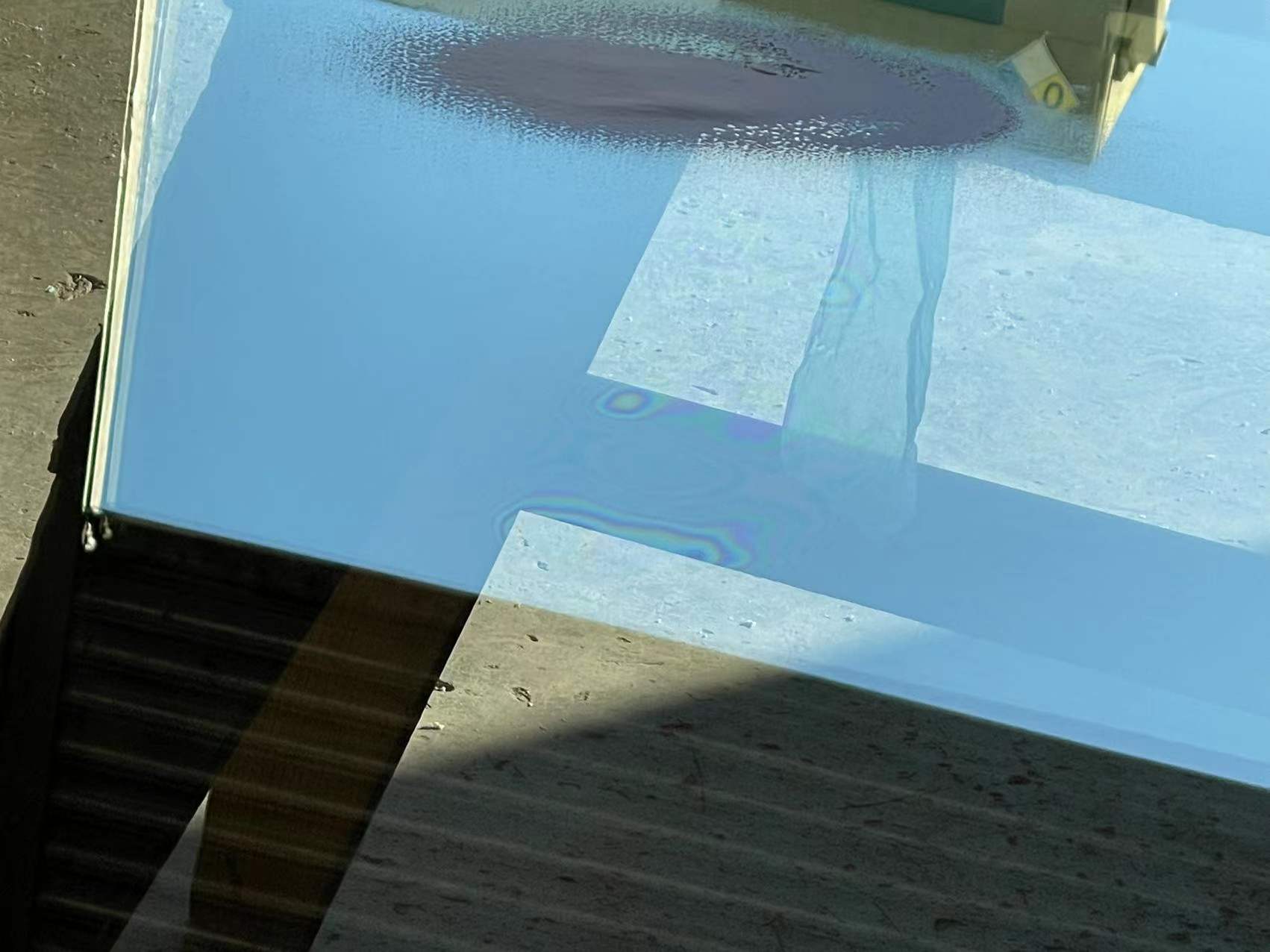Introduction
Interference fringes in Integrated Glass(IG) refers to an optical phenomenon that commonly results in rainbow patterns in the glass of your windows/doors. An important note for it is it does not stand for defective glass. The fringes are more likely to occur when the two or more pieces of glass are uniform in thickness.
Brewster’s Fringes
Given the condition as integrated glass, Brewster’s Fringes is the most common phenomenon you could find that results in rainbow patterns. Because it usually happened on glasses that are not in touch with each other.
There are two types of Brewster’s Fringes, determined by whether the thicknesses of two glass panels are the same.

Figure 1. Rainbow-like Brewster’s Fringe in a double pane integrated glass
The First type of fringe happens when the two glass layers have the same thickness. In this condition, the light reflected by the first layer will interfere with the light reflected by the second layer, resulting in a relatively strong colored rainbow-like pattern.
The First type of Brewster’s fringe will be most noticeable when the light source is roughly 60 degrees and viewing angles are from 0-30 degrees from perpendicular to the glass surface.
The Second type of fringe happens when the two glass layers have different thicknesses. In this case, the light reflected by the second layer will interfere with the light reflected by the first layer, resulting in a faint pattern. It will be much less noticeable compared with the first type of fringes.
The Second type of Brewster’s fringe will be most noticeable when the light source is about 75 degrees and the viewing angle larger than 30 degrees from perpendicular to the glass surface.
